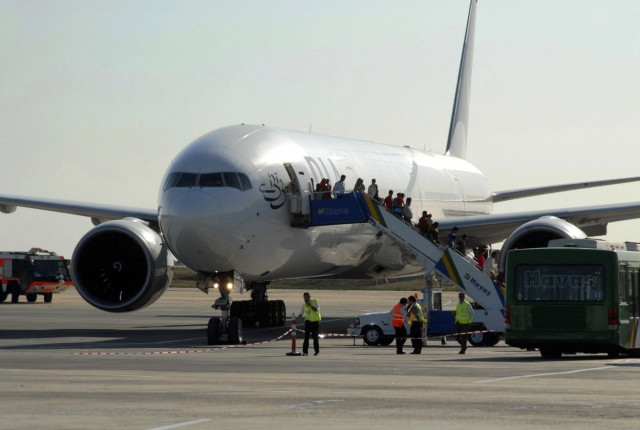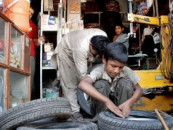Can PIA gear up for privatisation in its dire straits?
VSS and segregation of functions are insufficient to make airline profitable again

In 1998, Air Lanka, the government-owned airline of Sri Lanka, was partially divested to Emirates with full management control, initiating a ten-year strategic partnership. A decade later, Emirates chose not to renew its management contract due to government interference, selling back its 43.6% stake in Air Lanka to the Sri Lankan government. After Emirates’ exit, the profitable Sri Lankan airline accumulated losses exceeding $875 million under government administration within the next seven years.
It took the Sri Lankan government over a decade until 2022 to break even by offering voluntary retirement packages and reducing operations. Presently, the government is actively engaged in discussions with companies, including Emirates and Tata, with the aim of fully privatising the airline by the end of this fiscal year.
Drawing parallels with Air Lanka’s experience, Pakistan International Airlines (PIA) should have been privatised in 2001 (before 9/11) when it reached break-even after a decade of losses. The 2006 crash of a PIA flight from Multan marked a new low, resulting in the cancellation of direct routes to the US and Europe, and the ban of its older fleet from entering Europe. The airline became mired in debt and failed to achieve net profitability. In 2020, PIA reported an operational profit (not net profit) of Rs2.4 billion for the fiscal year 2020 due to flight suspensions during the COVID-19 pandemic. However, in May 2020, a PIA Airbus crashed near Karachi airport with 99 people on board. Following this, Pakistani aviation minister Ghulam Sarwar Khan stated that 262 of Pakistan’s 860 active pilots held suspicious or fake licenses. These incidents pushed PIA beyond a point of return, as Pakistani pilots were banned in many Western and Southeast Asian countries, and PIA was barred from flying in European airspace.
Read Govt rejects Rs7.3b grant for PIA
At this stage, it will take over a decade of consistent reforms to bring the airline back to profitability, provided there are no further mishaps or crashes during this period. Privatisation at this stage might not be the best idea, but it could be the only viable option given the current situation, as reforms are extensive and painful.
The new state-owned enterprises (SOE) policy published by the finance ministry includes a clause that allows SOEs to hire contractual staff who can be laid off with one month’s notice if necessary. This is a good practice as PIA has over 500 employees per aircraft, while other carriers, like Turkish Airlines, have approximately 94 staff per aircraft. Overstaffing is the key issue here, and past experience has shown that Voluntary Separation Schemes (VSS) and the segregation of core and non-core functions are insufficient to make the airline profitable again. This is due to the influence of the PIA Collective Bargaining Agent (CBA) union, which has historically disrupted all reform and privatisation efforts. Now, PIA is on the brink of a shutdown as it cancelled hundreds of flights in October this year due to financial difficulties and strikes.
PIA has accumulated losses of over Rs700 billion, and the current caretaker government intends to transfer PIA’s legacy liabilities to a new holding company, offering only the current core assets and liabilities for privatisation. However, PIA’s tarnished reputation due to safety concerns and a workforce riddled with corruption and inefficiency has made it unattractive to potential buyers.
Read more PIA commits to paying Rs1.35b to PSO
One potential solution is to declare PIA bankrupt, followed by the government seizing its assets due to pending payments to Pakistan State Oil (PSO) and other state companies. The government could then choose to auction these assets or establish a new airline through a Public-Private Partnership with a minority state share, transferring efficient former PIA employees to the new airline. Employees laid off may be offered a golden handshake, with no future pension payments as an option.
Alternatively, employee stock ownership might be considered, as investors may be unwilling to reform a massive state-owned enterprise like PIA or create another entity from its remnants. Ownership of the airline could be transferred to the CBA union, representing over 15,000 employees, with shares allocated to individual employees in lieu of commuted gratuity, pension, and general provident fund. The employee-led management would then be responsible for running the company, ensuring solvency, or deciding on a sale if necessary.
THE WRITER IS A CAMBRIDGE GRADUATE AND IS WORKING AS A STRATEGY CONSULTANT
Published in The Express Tribune, October 30th, 2023.
Like Business on Facebook, follow @TribuneBiz on Twitter to stay informed and join in the conversation.



















COMMENTS
Comments are moderated and generally will be posted if they are on-topic and not abusive.
For more information, please see our Comments FAQ